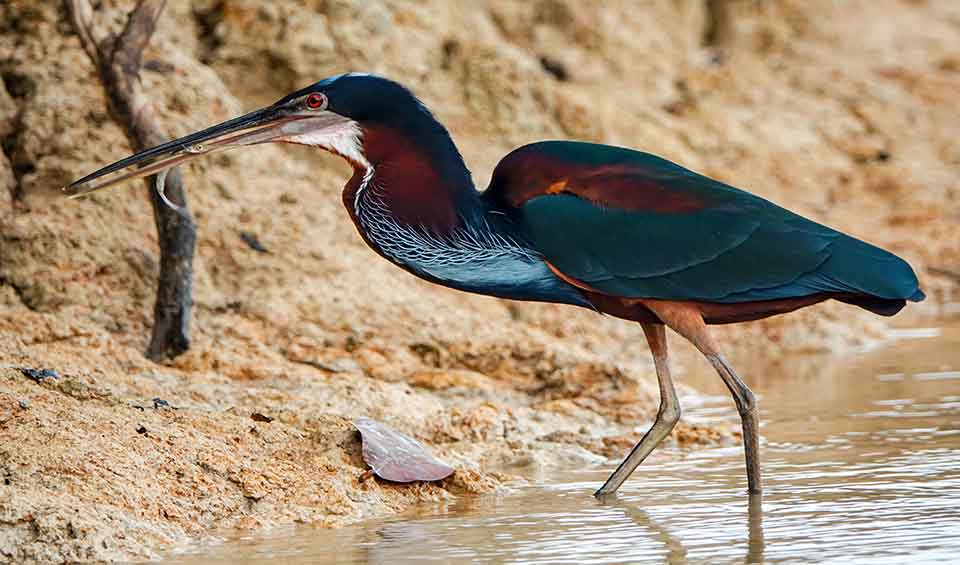Often called the “jewel of the rainforest” for its stunning colors and graceful presence. Native to Central and South America, this shy bird is found in quiet, slow-moving rivers, flooded forests, and mangroves from southern Mexico down to the Amazon Basin. Despite its wide range, the Agami heron is rarely seen, making it a mysterious and elusive figure in the tropical wetlands it calls home.
Unlike the tall, bold herons many people are familiar with, the Agami heron has a shorter neck, a more crouched posture, and a deliberate, stealthy hunting style. It is a medium-sized heron, but it appears even smaller because it moves low and carefully through dense vegetation. What makes it truly unforgettable is its breathtaking plumage — the body is a deep chestnut red, the wings are a cool metallic blue-green, and the throat and belly are marked with fine white lines. Its long, slender bill, perfect for spearing small fish and amphibians, gives it an elegant, almost delicate look.
The Agami heron is a patient and stealthy hunter. It prefers stalking prey slowly or standing motionless near the water’s edge, waiting for the perfect moment to strike. Its diet mainly consists of small fish, amphibians, reptiles, and aquatic insects. Unlike herons that hunt in open wetlands, the Agami sticks to shaded, heavily vegetated areas, making it harder for predators — and birdwatchers — to spot.
Distribution
 Belize
Belize Bolivia
Bolivia Brazil
Brazil Colombia
Colombia Costa Rica
Costa Rica Ecuador
Ecuador French Guiana
French Guiana Guatemala
Guatemala Guyana
Guyana Honduras
Honduras Mexico
Mexico Nicaragua
Nicaragua Panama
Panama Peru
Peru Suriname
Suriname Venezuela
VenezuelaAnything we've missed?
Help us improve this page by suggesting edits. Glory never dies!
Suggest an editGet to know me
Terrestrial / Aquatic
Altricial / Precocial
Polygamous / Monogamous
Dimorphic (size) / Monomorphic
Active: Diurnal / Nocturnal
Social behavior: Solitary / Pack / Colony
Diet: Carnivore / Herbivore / Omnivore / Piscivorous / Insectivore
Migratory: Yes / No
Domesticated: Yes / No
Dangerous: Yes / No




